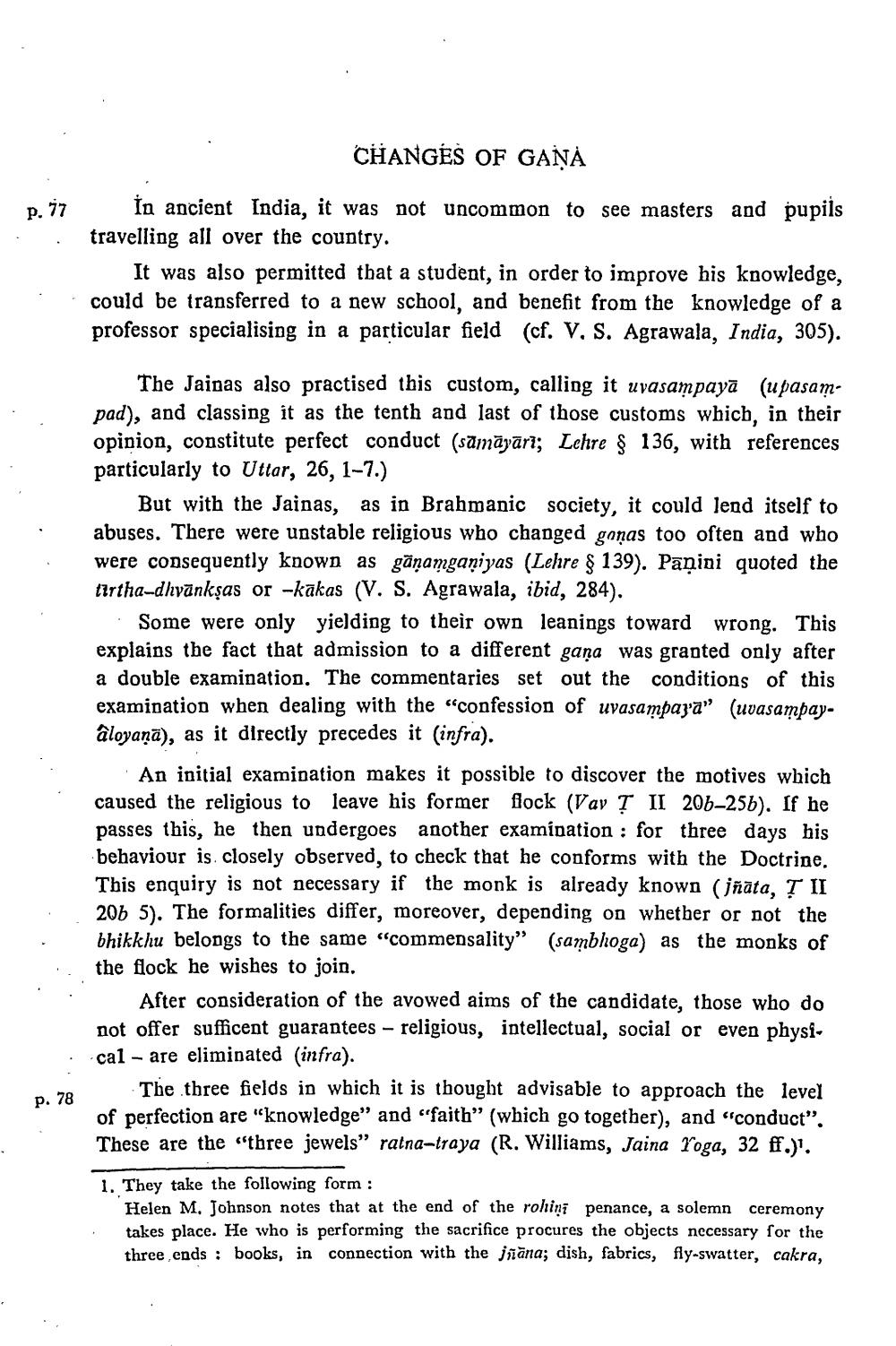________________
CHANGES OF GANA
p.17
İn ancient India, it was not uncommon to see masters and pupils travelling all over the country.
It was also permitted that a student, in order to improve his knowledge, could be transferred to a new school, and benefit from the knowledge of a professor specialising in a particular field (cf. V. S. Agrawala, India, 305).
The Jainas also practised this custom, calling it uyasampayā (u pasam. pad), and classing it as the tenth and last of those customs which, in their opinion, constitute perfect conduct (sāmāyārt; Lehre § 136, with references particularly to Uttar, 26, 1-7.)
But with the Jainas, as in Brahmanic society, it could lend itself to abuses. There were unstable religious who changed gonas too often and who were consequently known as gānamganiyas (Lehre § 139). Pāṇini quoted the tirtha-dhvankşas or -kakas (V. S. Agrawala, ibid, 284).
Some were only yielding to their own leanings toward wrong. This explains the fact that admission to a different gana was granted only after a double examination. The commentaries set out the conditions of this examination when dealing with the “confession of uvasampara” (uvasampayâloyanā), as it directly precedes it (infra).
An initial examination makes it possible to discover the motives which caused the religious to leave his former flock (Vav Ţ II 206-25b). If he passes this, he then undergoes another examination : for three days his behaviour is closely observed, to check that he conforms with the Doctrine. This enquiry is not necessary if the monk is already known (iñata. T II 206 5). The formalities differ, moreover, depending on whether or not the bhikkhu belongs to the same “commensality” (sambhoga) as the monks of the flock he wishes to join.
After consideration of the avowed aims of the candidate, those who do not offer sufficent guarantees - religious, intellectual, social or even physical - are eliminated (infra).
The three fields in which it is thought advisable to approach the level of perfection are "knowledge" and "faith" (which go together), and "conduct". These are the "three jewels” ratna-traya (R. Williams, Jaina Yoga, 32 ff.)'.
•
p. 78
1. They take the following form:
Helen M. Johnson notes that at the end of the rohini penance, a solemn ceremony takes place. He who is performing the sacrifice procures the objects necessary for the three ,ends : books, in connection with the jñāna; dish, fabrics, fly-swatter, cakra,




